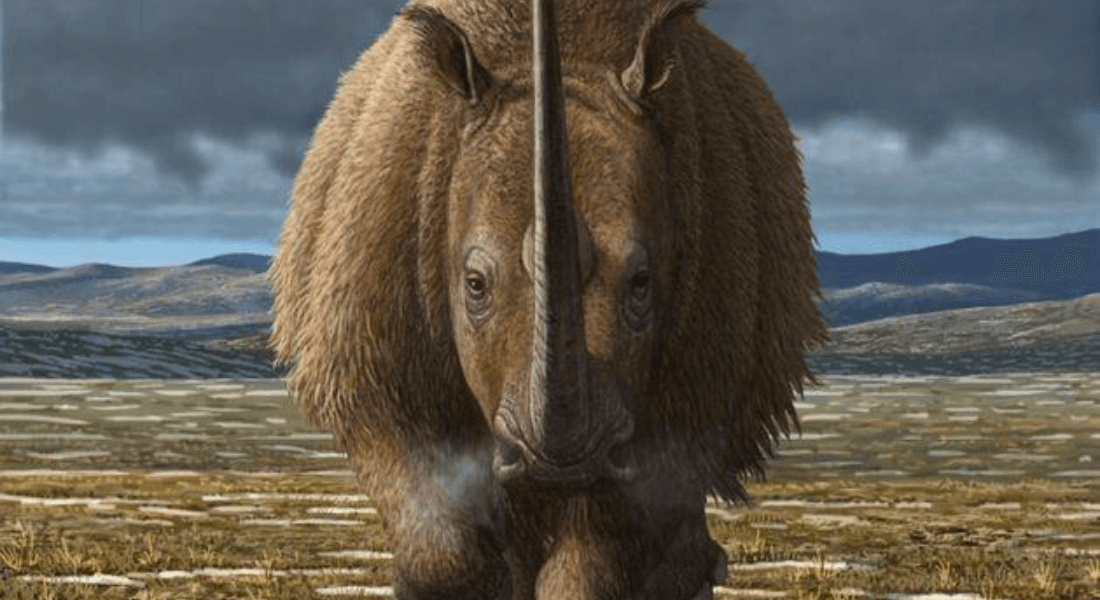Shedding light on the extinction of the woolly rhinoceros
Researchers have previously pointed to climate change as the sole reason for the extinction of the woolly rhinoceroses. But thanks to a combined effort between Adelaide University and Globe Institute at University of Copenhagen, researchers are now able to determine that human activity contributed to the iconic species’ demise.

90% of all large mammal species went extinct in the last 15,000 years with species of rhinoceroses remaining as few survivors. However, one megafauna species of rhinoceroses that didn’t succeed in surviving until present day is the is the iconic woolly rhinoceros (Coelodonta antiquitatis) that roamed the steppes of Northern and Central Eurasia until their disappearance for approximately 10,000 years ago.
The reason behind the disappearance of the animal has been a long-standing mystery in the scientific community. Researchers have previously concluded the species was driven to extinction solely due to climate change. But now, at team of researchers from Environment Institute at Adelaide University and Globe Institute, University of Copenhagen, can conclude that human activity was a substantial co-factor in extinction of the woolly rhinoceros based on the examination of fossil records, ancient DNA, and computationally modelled population dynamics.
The paper is published in PNAS led by Associate Professor Damien Fordham, University of Adelaide, and official member of both Center for Macroecology, Evolution and Climate (CMEC) and the Villum Center for Global Mountain Biodiversity with last author of the paper, Professor Eline Lorenzen, Section for Molecular Ecology and Evolution, Globe Institute. Co-authors include Postdoc Elisabetta Canteri, Professor Carsten Rahbek, and Professor David Nogués-Bravo.
Pathway to extinction
The research team has discovered that sustained hunting by humans prevented the woolly rhinoceros from accessing favorable habitats as Earth increasingly warmed following the Last Ice Age, explains Associate Professor and lead author Damien Fordham:
- Using computer models, fossils and ancient DNA, we traced 52,000 years of population history of the woolly rhinoceros across Eurasia at a resolution not previously considered possible. This showed that from 30,000 years ago, a combination of cooling temperatures and low but sustained hunting by humans caused the woolly rhinoceros to contract its distribution southward, trapping it in a scattering of isolated and rapidly deteriorating habitats at the end of the Last Ice Age.
Thus, the recent discovery contradicts previous research that found humans had no role in the extinction of the woolly rhinoceros – despite the animal co-occurring with humans for tens of thousands of years prior to its extinction.
-The demographic responses revealed by our analysis were at a much higher resolution to those captured in previous genetic studies allowing us to pinpoint important interactions that woolly rhinoceroses had with humans and document how these changed through space and time. One of these largely overlooked interactions was persistent low levels of hunting by humans, probably for food, says Professor Eline Lorenzen, University of Copenhagen’s Globe Institute.
Enhancing future conservation
A central message from the research team is that humans pose a similar threat today with large populations of animals being pushed into fragmented habitats due to hunting and land-use change. However, hope remains that lessons from the past can be valuable for future purposes, explains co-author and Professor David Nogués-Bravo:
-This understanding is crucial for developing conservation strategies to protect currently threatened species, like vulnerable rhinos in Africa and Asia. By studying past extinctions, we can provide valuable lessons for safeguarding Earth’s remaining large animals.
About the study
Fordham, D.A., Brown, S.C., Canteri, E., Austin, J.J., Lomolino, M.V., Haythorne, S., Armstrong, E., Bocherens, H., Manica, A., Rey-Iglesia, A., Rahbek, C., Nogués-Bravo, C., Lorenzen, E.D. 52,000 years of woolly rhinoceros population dynamics reveal extinction mechanisms. PNAS 121 (2024). https://doi.org/10.1073/pnas.2316419121
Front cover illustration by Mauricio Anton.
Contact
Damien Fordham
Associate Professor
Eline Lorenzen
Professor
David Nogués-Bravo
Professor
